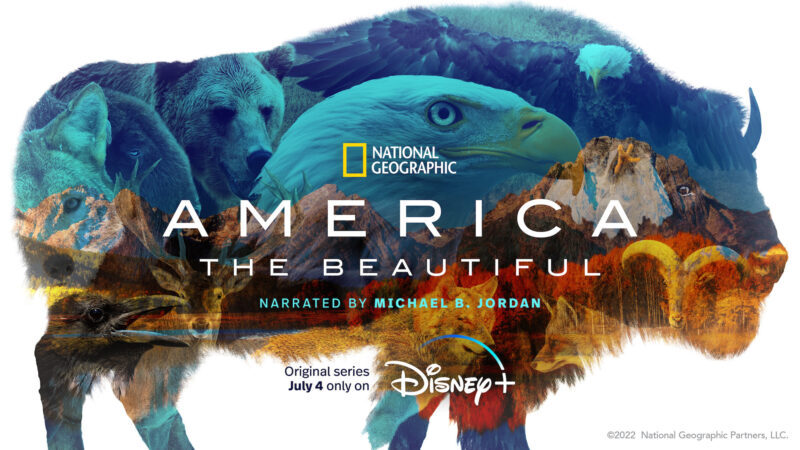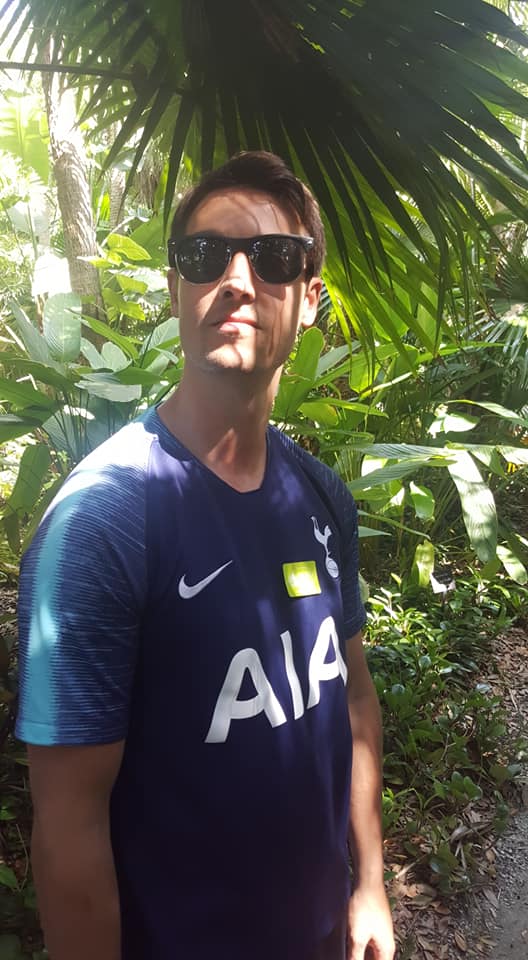Cinematographer Greg Wilson has been a part of some major projects in the last few years, including the award-winning documentary Zion, and the Netflix film Amateur. Most recently, he took to the skies as the aerial cinematographer for the National Geographic series, America the Beautiful, a six-part documentary series streaming now on Disney+.
The documentary series takes viewers on an epic journey across North America’s most spectacular regions to witness the breathtaking landscapes of the most diverse land on Earth while showcasing its many unique creatures. The goal of the documentary, along with entertaining the viewer, is to inspire audiences to conserve the precious habitats and inhabitants found in our own backyards.
Wilson captured the diverse and mesmerizing landscape of North America from thousands of feet in the air to help viewers get an unprecedented look at the vast ecosystems, flora, and fauna of the continent. Narrated by Micheal B. Jordan of Creed and Black Panther fame, the documentary series is rolling out just in time for Independence Day, with all six episodes available to stream on July 4.
America the Beautiful is the first natural history series to place cinema-grade cameras on fighter jets, taking viewers on a jaw-dropping ride through some of the most impressive scenery on Earth, revealing rich and textured worlds that are unique to the continent. The jet-mounted cameras show how America’s landscapes fit together and shape one another: a single shot can reveal how the Sierra mountains made the Mojave Desert or the Colorado River carved the Grand Canyon. The same aerial system proved a revelation for also filming wild weather, enabling footage of supercells and tornados from close range. For the series, National Geographic has purchased carbon credits from projects that reduce emissions, benefit communities, and support biodiversity to compensate for production emissions, including the emissions of the aircraft used in filming.
Innovation & Tech Today spoke with Wilson preceding America the Beautiful’s release about the novel approach to making the documentary and what it felt like to capture the natural beauty of North America’s landscape from several different aircraft.
This interview has been edited for length and clarity.
Innovation & Tech Today: So, can you tell me a little bit about your experience on the documentary series?
Greg Wilson: I’ve been a cinematographer for about 14 years, and shot all kinds of commercials and documentaries and feature films. And, you know, my roots come from natural history, still photography, and bringing high-speed photography into the natural history sphere for storm chasing and things like that back in, 2007, 2008, and 2009. Kind of moving back into the natural history sphere with a team around us with Wild Star Films, and the trust that they extended to us to explore the jet platform, the innovation and the coordination and the teamwork that went into this series provides a totally new perspective and a new ability to place cameras in places where they’ve never been before. So when we were first approached by Mark Linfield and Vanessa Berlowitz about engaging and joining this series, we couldn’t have been more excited.
I&T Today: As far as doing this documentary with jets, is that a fairly new concept? Because I know that drones and helicopters are used a lot. So what is the advantage of using jets for this one?
GW: So, there’s a significant amount of stability that’s gained. Drones have been used for quite a while. Helicopters have been used for a long time in natural history. I mean, going back to Planet Earth, and it gives you a new perspective and an ability to stay back a little bit from the predation that’s happening with wolves and caribou and things like that. But as far as stability over long distances and transitions of altitudes from 500 feet to 40,000 feet in a single shot, there’s just nothing like a jet aircraft to be able to bring entirely new perspectives. It’s just an entirely new lens and paintbrush to work with as a cinematographer.
I&T Today: Do you have much experience, flying in jets, or was this the first time doing cinematography in a plane?
GW: I have a lot of history in helicopters, working in helicopters, but I’ve been primarily a ground-based cinematographer for most of my career. In 2019, I set out with my business partner and a couple of other guys at V Speed — that’s my company is V Speed — to build a jet aircraft, primarily for some air-to-air opportunities for filming fast airplanes. And as soon as we started the build, the wheels started turning of what could we do with this thing in the natural history sphere, because we all love weather and we’re all aviation evangelists, so to speak. I mean, we love the utility of aircraft. The majority of us are pilots and it’s a beautiful thing being above the Earth, and being able to look down and when you take off and the world falls away, it’s a pretty special place. But as a camera vehicle, there’s nothing like it.
I&T Today: What kind of jets did you use to shoot?
GW: The, first aircraft that we built was an L39. So that’s a twin-seat fighter. It fits the profile of the GI system that we use perfectly, which is rated for 350 knots and three Gs. Now, the aircraft can perform at a bit higher level than the, GI, but overall it fits the envelope for most of the work that we’re gonna do, In most of the spheres that we work in. So that was me and a pilot in the front, who is almost always gonna be a former fighter pilot. So we work with Air Force fighter pilots from both the F Four Phantom and the F16. And then our other main pilot is John Flanigan, who was a Naval aviator and a Top Gun, graduate and a top gun adversary pilot who basically taught the new recruits what they’d be up against if they were to go into combat with an enemy.
So that was the L39. We also used a Phenom 300 business jet, which we could bring on our whole staff and basically have a command station in the air where we could have two pilots: one managing systems, one managing the flying. And we could have a meteorologist on board. We could have our aerial coordinator, Mike, and then we could have up to two cameras operating at the same time, one on the nose, one on the tail, and then we could also travel our technician in the aircraft to fend off any technical glitches that we may encounter as we fly.
I&T Today: So you felt pretty safe up there?
GW: Yeah. I mean aviation self-selects for some pretty special folks and we’ve put in great effort in hand-picking the best of the best, that have basically honed their skills over a lifetime. And now we’re all kind of united in this sort of multidisciplinary team that is approaching and applying all of the skills that we’ve learned over the last decade or two or three or four in some cases, applying that to film and natural history.
I&T Today: So, what makes this documentary different from other nature documentaries?
GW: I think, obviously the animal and wildlife footage and the way that those scenes are treated is above and beyond anything that I’ve seen in another series. But I think if we were to talk about my contribution and our team’s contribution, setting scope and scale and really illustrating the way things fit together and how mountain ranges are essential. The Sierra Nevada mountain range is a shield that blocks all the moisture from the fertile valley of California on the west side. And then on the east side, you have Death Valley. I think you can really see how things, from an ecological standpoint, all fit together. So I think it’s a big scope and scale. And then I think the jet brings an energy to the natural world that has never been there before.
I&T Today: Yeah. I could feel that. So how long did it take for the entire series to be shot?
GW: We were brought in a little bit later than when it actually started. I think we were the last addition to the show. We were contacted in June of 2019 initially, and we didn’t fly our test flight until December, 2019. So we did two and a half days down in Arizona, and we ran a series of dynamic maneuvers and very precise ground tracks and paths through Monument Valley. And then, it wasn’t until May of 2020 when we actually got formally green-lit and started filming, and that had to do precisely with the closure of the national parks.
And that, because at COVID, that was kind of our big push to get out and we filmed seven national parks in 10 days, or was it… wow — 10 national parks in seven days? Yeah, it was 10 national parks in seven days.
Then, that propelled us through the rest of the season and we wrapped in December of 2021.
I&T Today: Okay. Awesome. I’m always fascinated in nature documentaries at how close these cinematographers and photographers can get to the animals. How can photographers get so close to these predators without getting their hands bitten off or disturbing them?
GW: I think there’s just a building of mutual trust and getting them spending a lot of time with the animals and making sure that they know that you’re not a threat. There are a lot of very long lenses that are used. There are some new technologies that use small robotic vehicles that carry stabilized camera systems and things like that. So there’s a variety of methods and tools that play into this to create either the perceived sense of being very close to an animal or the actual physical proximity that you can get by building trust or using systems and trap cameras and different methods to actually physically get close to the animal.











